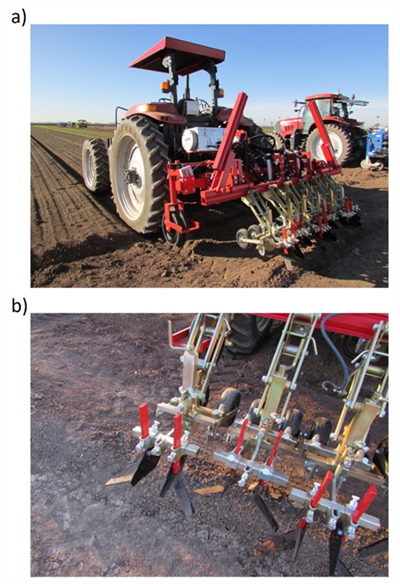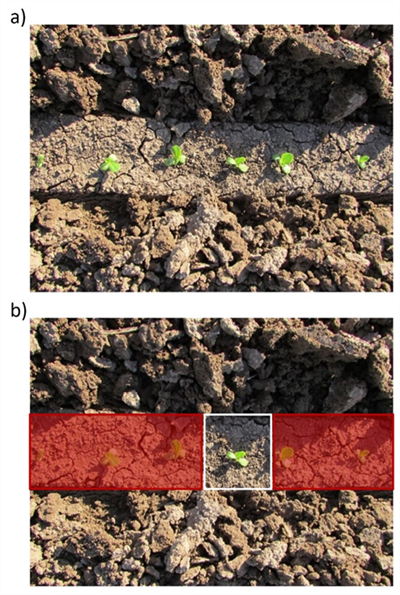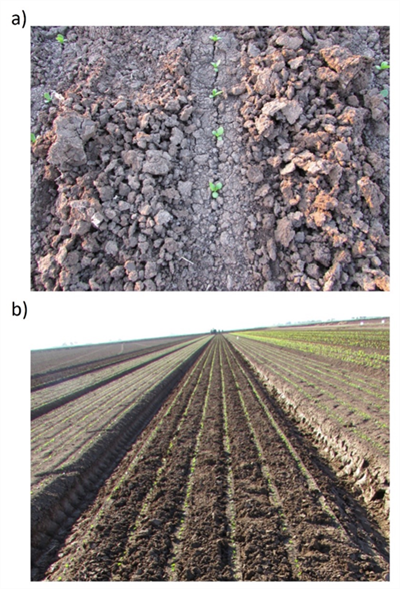A technique that I’ve been curious about for some time now to minimize the number of weeds close to crop plants is the use of early (seedling stage of growth) close cultivation. Early close cultivation can be accomplished using a camera guided cultivator equipped with specially designed cultivating tools. Examples of the technology and technique were demoed at our 2016 and 2022 AgTech Field Days by K.U.L.T.-Kress, LLC1, the manufacturer of the equipment. The systems basically comprised a camera vision system for tracking the crop row, a toolbar attached to a parallel linkage that facilitated side-to-side movement and small cultivator assemblies for each of the seedlines (Fig. 1). In the demos conducted in lettuce, cultivating tools were positioned such that the uncultivated band was only about 2” wide (Fig. 2). If the crop were thinned by hand hoe or chemically, only a small area (roughly 2” x 2”) around the keeper plant would remain that had not been cultivated or treated with an herbicide material (Fig. 3). Assuming that existing weeds were controlled, and no new weeds emerge, the number of weeds close to the crop plant would be minimal. I realize soil disturbance near the crop plant is not desired but cultivating 1” away from seedling lettuce should be comparable to, and not cause any more crop injury than thinning seedlings spaced 2” apart with a hand hoe. I’m curious what your thoughts are on this. I’d love to hear your feedback.
[1] Reference to a product or company is for specific information only and does not
endorse or recommend that product or company to the exclusion of others that
may be suitable.

Fig. 1. K.U.L.T.-Kress camera guided cultivator (a) equipped with cultivating tools
designed for close cultivation (b). (Photo credits: Mazin Saber, University of
Arizona)

Fig. 2. Close cultivation of seedling lettuce with a camera guided
cultivator. Close up view (a) and far view (b). (Photo credits: Mazin Saber,
University of Arizona)

Fig. 3. Close cultivation of seedling lettuce with camera guided
cultivator leaves a roughly 2” wide uncultivated band around the
seedline (a). Thinning by hand hoe or chemically would kill plants in the
seedline (red shaded area) and leave a small area (roughly 2” x 2”)
(indicated by white box) around the keeper plant that had not been
cultivated or treated with an herbicidal material (b). Assuming no new
weeds emerge, the number of weeds near the crop plant that are
difficult and time consuming to remove is minimal.
Fig. 4. Video of camera guided cultivator equipped with cultivating tools
designed for close cultivation operating in six-line seedling romaine
lettuce. Click here or on the image to see the video. (Video credit: Mazin
Saber, University of Arizona)





